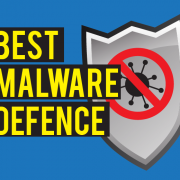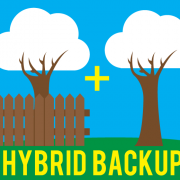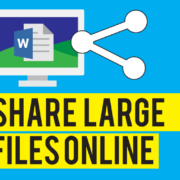Almost anyone who does any kind of computing, whether it’s at a desktop or on a mobile device, has heard about the “cloud.” However, how many people really know what that means? If you’ve ever asked yourself: “what exactly is this cloud everyone is talking about?” don’t worry you’re probably not alone. The first thing you should know is that an umbrella is not required for this cloud.
What is Cloud Computing?
In a nutshell cloud computing is storing, managing and processing your computer data, such as files, documents, photos and videos, on a remote network server which is hosted on the Internet, like what we do at KineticD. When you store your information on a cloud you don’t have to store it on your personal computer or a local server. You simply save your data to the so-called cloud over the Internet and then access it the same way whenever you’re ready.
Cloud Computing Buzzwords
So now that you have a better idea of what the cloud is, let’s take a look at some of other relevant “buzzwords” that are commonly mentioned in regards to cloud backup.
- Caching – keeping high priority requests for a certain time to help in performance.
- Proxy – there are several proxies, including transparent and reverse proxies, which are used as the “gateway” for execution in a system designed to use caching.
- Vertical Scaling – growing or increasing a cloud system typically done by adding more capacity or memory space.
- Geo Fencing – limiting or restricting access to or from a DNS server by placing a virtual fence around it determined by location. Often used for mobile devices.
- Enterprise-Grade – specifies a cloud service’s ability and capacity to store and secure data at a high level. In other words, whether or not it can meet the needs of an entire enterprise.
- Hybrid Cloud – these are popular because they allow a company to get the best of both worlds: local and external storage resources. A hybrid cloud allows a company to save some data here and other data there.
- SOA – Service-Oriented Architecture supports regular communication between different services.
- Remote Access – being bale to work from a given computer or network while in another location.
- High Availability – a method to make sure performance is met for the agreed upon time period. A provider determines the “availability” level to a system according to what their system is capable of handling.
- EAI – this refers to data migration or in other words integrating or merging data from separate applications together.
- Scalability – a host’s ability to resize its server according to a client’s needs and timetable.
- Multi-Tenancy – even though many different clients’ information is being stored on the same servers, it’s still safe and secure and separate from one other.
- Self-Healing Hardware – this means the hardware can detect when something isn’t operating properly and do what it takes to make corrections to fix the problem without help or prompting.
Reach for the Skies and Touch the Cloud
Cloud computing is a growing trend in computer data and information storage, which figures to only increase. Don’t worry, though, if you still don’t feel like an expert. KineticD is here to help and we can take care of all of your cloud backup and storage needs. We offer easy, affordable and safe storage for anyone looking to secure his or her vital computer information. In fact, with our service you might even say you feel like you’re on “cloud 9”.










Leave a Reply
Want to join the discussion?Feel free to contribute!